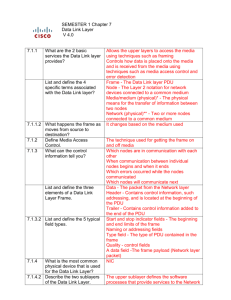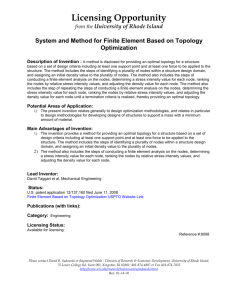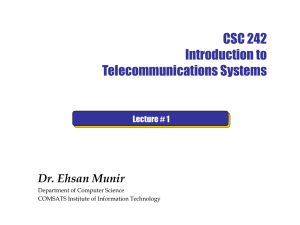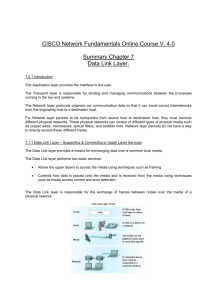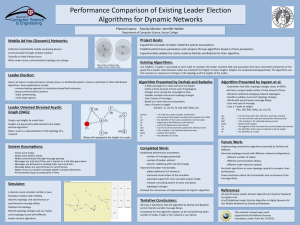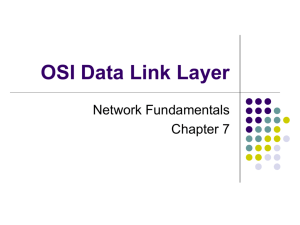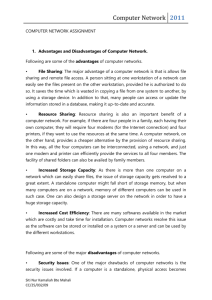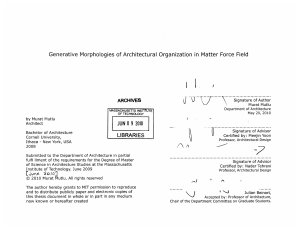Network+Fundamentals+Chapter+07+SSG
advertisement
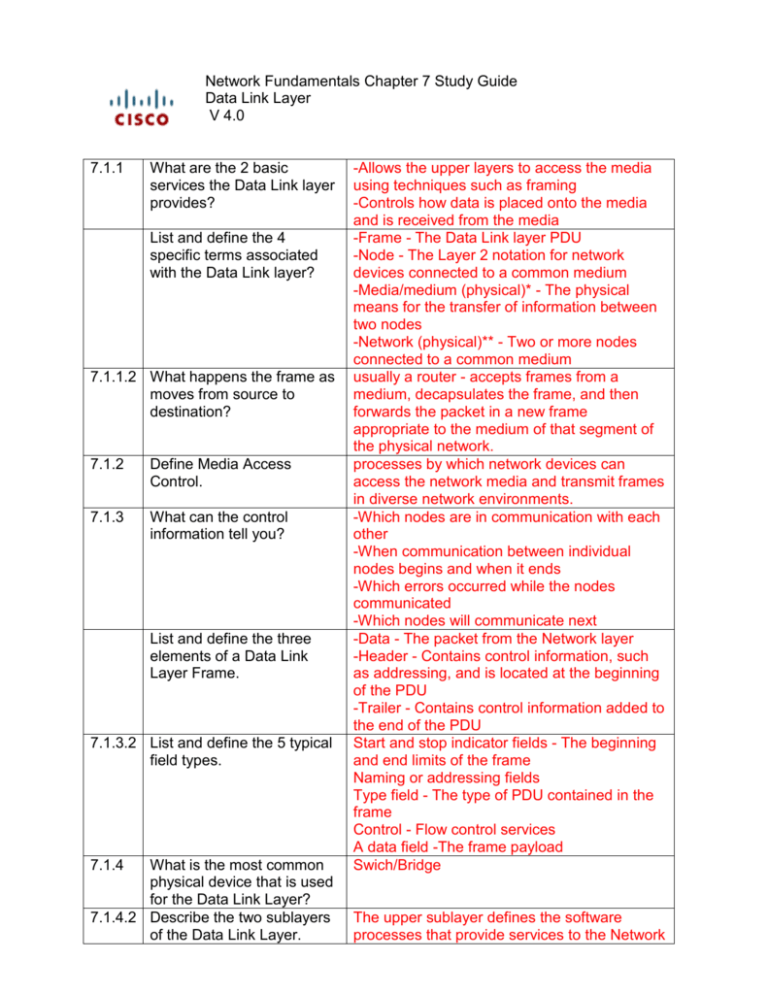
Network Fundamentals Chapter 7 Study Guide Data Link Layer V 4.0 7.1.1 What are the 2 basic services the Data Link layer provides? List and define the 4 specific terms associated with the Data Link layer? 7.1.1.2 What happens the frame as moves from source to destination? 7.1.2 Define Media Access Control. 7.1.3 What can the control information tell you? List and define the three elements of a Data Link Layer Frame. 7.1.3.2 List and define the 5 typical field types. 7.1.4 What is the most common physical device that is used for the Data Link Layer? 7.1.4.2 Describe the two sublayers of the Data Link Layer. -Allows the upper layers to access the media using techniques such as framing -Controls how data is placed onto the media and is received from the media -Frame - The Data Link layer PDU -Node - The Layer 2 notation for network devices connected to a common medium -Media/medium (physical)* - The physical means for the transfer of information between two nodes -Network (physical)** - Two or more nodes connected to a common medium usually a router - accepts frames from a medium, decapsulates the frame, and then forwards the packet in a new frame appropriate to the medium of that segment of the physical network. processes by which network devices can access the network media and transmit frames in diverse network environments. -Which nodes are in communication with each other -When communication between individual nodes begins and when it ends -Which errors occurred while the nodes communicated -Which nodes will communicate next -Data - The packet from the Network layer -Header - Contains control information, such as addressing, and is located at the beginning of the PDU -Trailer - Contains control information added to the end of the PDU Start and stop indicator fields - The beginning and end limits of the frame Naming or addressing fields Type field - The type of PDU contained in the frame Control - Flow control services A data field -The frame payload Swich/Bridge The upper sublayer defines the software processes that provide services to the Network 7.1.5 7.2.1 7.2.2 What are the two functions of the Logical Link Control? What are the two functions of the Media Access Control? What are the 4 organizations that define the Data Link standards? What analogy is made with the media access control? What does the method that media access control uses depend on? What are the two basic media access control methods for shared media? What are two examples of controlled media access? What are two examples of contention-based media access? Why can controlled media access be inefficient? What is CSMA? 7.2.3 7.2.4 7.2.5 layer protocols. The lower sublayer defines the media access processes performed by the hardware. Places Information in the frame—Identifies which network layer protocol is being used. Provides Data Link layer addressing & delimiting of data according to physical Signaling requirements of medium , ISO—IEEE—ANSI—ITU- Regulating the placement of data frames onto the media is known as media access control. Media Sharing. Topology Controlled Contention based Deterministic---throughput process to first detect if the media is carrying a signal What is a data collision? the data sent by both devices will be corrupted and will need to be resent. What is CSMA/CD? monitors the media for the presence of a data signal. What is CSMA/CA? examines the media for the presence of a data signal. Define Half-Duplex. devices can both transmit and receive on the media but cannot do so simultaneously. Define Full-Duplex. both devices can transmit and receive on the media at the same time Define physical topology. arrangement of the nodes and the physical connections between them. Define logical topology. way a network transfers frames from one node to the next. What logical and physical Logical=network is closely related to the topologies are typically used mechanism used to manage network access in networks? The physical or cabled topology of a network will most likely not be the same as the logical topology. Define point-to-point Connects two nodes directly together. topology. 7.2.5.2 Define virtual circuit. 7.2.6 7.2.7 7.3.1 7.3.2 7.3.3 7.3.4 Which type of topology is used to determine the media access control? Define logical multi-access topology. What are the three types of media access control can be used in a multi-access topology? How does a data flow in a ring network? What are the three basic parts of a data link layer frame? What are the typical fields in the frame header? Which part the network (WAN/LAN) is the data link address used in delivering? What is the difference between Data Link Address and Logical Address? Does a point-to-point link need a data link address? Define error detection. Define Frame Check Sequence. How could the CRC be correct and the frame contain errors? Do all protocols support using the FCS to determine errors? 7.3.5 What Layer 2 protocols will we study in this course? Which usually performs at a higher bandwidth, LAN or WAN? 7.3.5.2 What do Ethernet standards define? What is the data link address? How is the data link address Logical connection created within a network between two network devices. Logical Point-to-point topology are typically CSMA/CD or CSMA/CA. However, token passing methods can also be used. CSMA/CD CSMA/CA ..Token passing each node in turn receives a frame. If the frame is not addressed to the node, the node passes the frame to the next node Header –Data--Trailer Start frame-Source&DestinationPriorty/Quality-Type-Logical Connection control-Physical link-flow control-Congestion Logical topology Data link address is only used for local delivery No trailer is used to determine if the frame arrived without error used to determine if errors occurred in the If two frames values are the same CRC reads it as arrived No Ethernet = PPP=HDLC = Frame relay= ATM LAN family of networking technologies that are defined in the IEEE 802.2 and 802.3 standards the frame structure is nearly identical for all speeds of Ethernet. identify the source and destination nodes expressed? 7.3.5.3 What type of architecture does PPP use? What are options available to use with PPP? 7.3.5.4 What is the standard used for wireless LANs? What services are supported by 802.11? 7.4.1.2 Examine each of the processes and take notes. Develop questions on any step you do not understand. Layered Authentication, compression 802 IEEE
